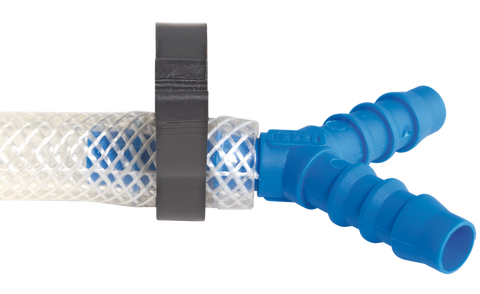
Getting the Design and Installation of Hose Clamps Right
Peter ColesEven if you are the most experienced of fitters, it always helps to review the process so that you can be sure that you are using the products in the right way. In this guide we provide information on clamping related technical issues to help you diagnose and fix any problems you may have.
Pipe Fittings and Design of Hose Clamps
An effective clamping solution relies on both the hose clamp and the pipe fitting. To realise optimal sealing performance, the following points must be taken into consideration before you fit the clamp:
-
Barbed profiles are normally best for sealing, however, they are not suitable for thin-walled or low-pressure applications.
-
Pipe fittings should be sized so that the hose will stretch slightly over the fitting. If you choose an oversize fitting it will be difficult to make it fully tight, but an undersize fitting can loosen to easily or make the hose bunch up
- Regardless, pipe fittings should have enough strength to withstand the compressive force of the clamp, and only choose heavy-duty clamps when both the hose and pipe are of strong and resilient material
Thrust: How Diameter Affects Axial Thrust
The build-up of pressure within a hose creates axial thrust, which tends to force the hose off the end of the pipe fitting. Therefore, one of the main purposes of a hose clamp is to resist the axial thrust to retain the hose in place.
The level of axial thrust is measured by the pressure generated in the hose, and the square of the hose diameter. To give you an illustration: the axial thrust of a 200mm internal diameter hose is a hundred times more than for a 20mm internal diameter hose.
For this reason, we strongly recommend heavy-duty hose clamps for large diameter hoses, where the pressure is significant. Otherwise, your hose will not remain in place for very long.
The Correct Tensioning
It is essential that you tighten any clamp to the correct tension to achieve the right performance. For all Bolt, Screw and Worm Drive clamps, we have provided a maximum torque figure.
It goes without saying that the higher the input torque for a given clamp, the higher the clamping force will be. However, this figure must not be used to compare the relative strength of clamps; as other factors, such as the screw thread and the bands' width also play a part.
We strongly recommend if you are still considering the options that you look at the booklets on our site for the different clamps and clips to ensure that you achieve the recommended tensioning for all of our ranges.
Positioning the Hose Clamp Correctly
When you tighten a hose clamp, it will squeeze the hose, resulting in compression. The knock-on effect of of this will be distortion of the hose, so it is critical that the clamp is not placed too near to the end of the hose, as there is a risk of leaking or for the clamp to fall off when placed under pressure. We recommend that the any clamp is at least 4mm from the end of the hose, as illustrated below.

More comprehensive information is available in the form of a Technical booklet. If you would like any additional information, or to discuss any options, please contact HCL directly.
